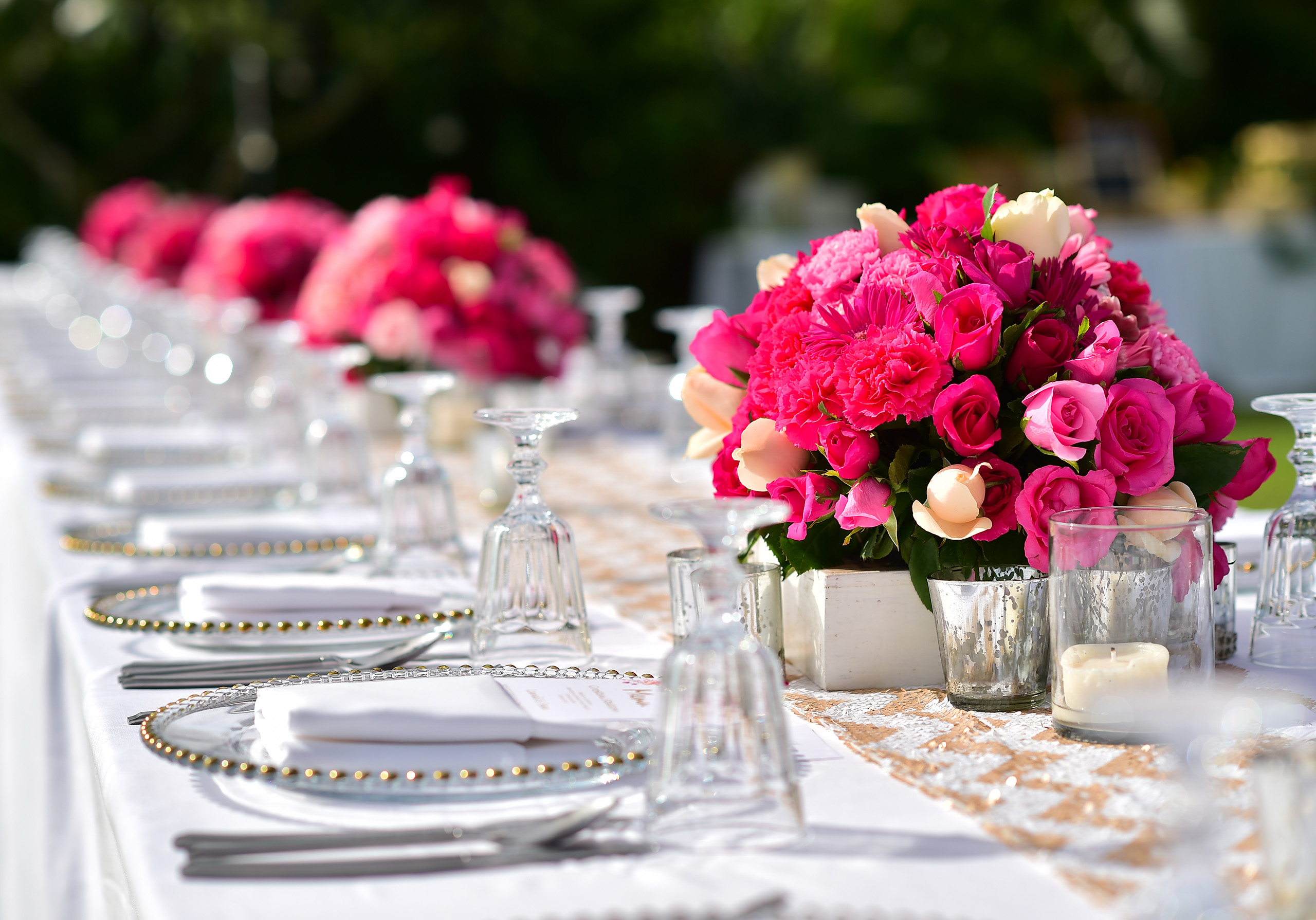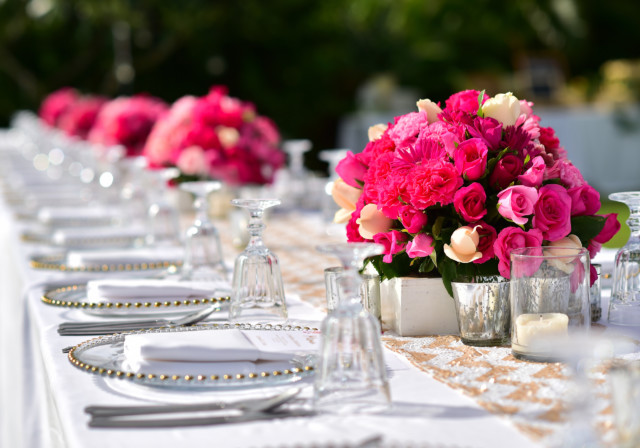It’s Tuesday and you have received the flowers for Saturday’s outdoor wedding. Suddenly, the clock begins to tick, counting down the optimum freshness of your blooms.
Time management is critical to vase life, and the unique demands of outdoor weddings complicate your task. Presenting fresh, vibrant flowers on Saturday depends on using tools and talent wisely.
Consider the Elements
For outdoor weddings you must consider the elements. Sun, wind, and temperature will all affect your flowers, primarily in terms of hydration. What can you do?
Flower Selection
You could caution your bride that hydrangea, for instance, is a bad idea on a hot day. Or fillers like ever-thirsty Bupleurum. You might suggest one of the interesting new varieties of hardy chrysanthemums or carnations. We all know, however, that the bride wants what she wants. If she insists on a potentially “troublesome” flower, ask your supplier for the hardiest variety, as varieties within a flower type can differ significantly.
Ethylene
Ethylene lurks throughout the flower chain. Many flowers are naturally ethylene sensitive, and improper handling (and higher temperatures) exacerbate this. Ethylene can arrest flower development and lead to other symptoms like petal drop and bent neck. Closed roses will likely remain closed, and flower food may not help. Make sure your supplier has treated your flowers with an ethylene action inhibitor.
Flower Food
Stage of openness is the primary struggle wedding florists face. Some use unusual methods to coax flowers open, placing them in warm water or storing them outside the cooler.
In fact, commercial flower food is the most effective tool to help flowers be their best on Saturday. From the moment you unpack the boxes, proper hydration with flower food promotes uptake and bloom opening, building healthier blooms ready for the rigors of outdoor weddings.
Fillers and Greens
In some shops, greens and fillers are still in boxes, stored dry in the cooler. It’s a common misconception that they don’t need the TLC flowers receive. Fern is hardy but it’s not indestructible! In wind and sun, greens and fillers get stressed like their floral cousins. Again, proper hydration and storage are key. Finishing sprays can also help by acting as anti-transpirants.
Storage
Properly nourished and hydrated flowers, stored in a 34-38°F cooler with 75-85% humidity, are most likely to flourish. Avoid temperature fluctuations, and don’t forget spacing and ventilation. Tightly bunched flowers can trap moisture, promoting mold growth and botrytis. A fan can help increase air flow in the cooler, but make sure the fan is not aimed directly at your flowers.
Transportation and Physical Damage
Mishandling flowers result in physical damage. But often, damage isn’t evident until much later when flowers are already arranged.
To avoid physical damage don’t touch or handle flowers by their blooms. Also, do not over stuff boxes or buckets with flowers to the point where you must force the bunches in and out of them. And always take good care when unpacking flowers and removing all wrapping and packaging materials. Be gentle with these beauties!
If flowers are too tightly packed during transportation, they will most likely crease or bend which will result in browning at those friction points. Firmly secure flowers during transport so that the blooms do not rub against the cardboard or packaging. Protective wrapping around rose heads can harm the roses if not affixed correctly. Even a slight bend can physically damage roses.
Saturday...
Keep flowers out of direct sun until the last moment. Hydrate often and use a finishing spray to lock in moisture.
Your Moment in the Sun!
Your flowers’ journey from farm to outdoor wedding venue is long and hazardous, and they are in your care only briefly. The choices you make and the tools you use will determine your flowers’ successful performance. It’s a performance sure to be noticed by the bride, the guest who goes home with a centerpiece, and the bridesmaid scouting florists for some FUTURE sunny Saturday!


